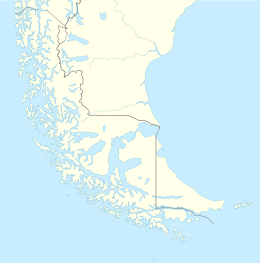Hoste (island)
| Native name: Isla Hoste | |
|---|---|

A view across the Beagle Channel to Isla Hoste from Isla Grande de Tierra del Fuego
|
|
|
Hoste Island at the end of Tierra del Fuego
|
|
| Geography | |
| Coordinates | 55°15′S 69°0′W / 55.250°S 69.000°WCoordinates: 55°15′S 69°0′W / 55.250°S 69.000°W |
| Archipelago | Tierra del Fuego |
| Area | 4,117 km2 (1,590 sq mi) |
| Highest elevation | 1,402 m (4,600 ft) |
| Highest point | Hoste High Point |
| Administration | |
| Region | Magallanes Region |
| Province | Antártica Chilena Province |
| Commune | Cabo de Hornos |
| Demographics | |
| Population | virtually uninhabited |
| Additional information | |
| NGA UFI -884382 | |
Hoste Island (Spanish: Isla Hoste) is one of the southernmost islands in Chile, lying south, across the Beagle Channel, from Isla Grande de Tierra del Fuego and west of Navarino Island, from which it is separated by the Murray Channel. Hoste Island has the southernmost trees on earth, Nothofagus antarctica. In Magellania, Jules Verne described an imaginary republic on the island.
With an area of 4,117 square kilometers (1,590 sq mi), Hoste is the second largest island of the Tierra del Fuego archipelago, after Isla Grande de Tierra del Fuego. The western area of the island forms part of the Alberto de Agostini National Park. The most southern point of the island is the False Cape Horn, on the Hardy Peninsula. It has 5 peninsulas: Hardy, Cloué, Rous, Pasteur and Dumas.
Peninsula Hardy (sometimes called "Pen Hardy") is located at one of the most southerly extremes of South America. It is the southern landform which extends into the Drake Passage to make the Bahia Nassau. False Cape Horn (Spanish: Falso Cabo de Hornos) is located at the southern tip of this peninsula.
The island was explored by the French scientific expedition La Romanche in 1881-2.
...
Wikipedia

